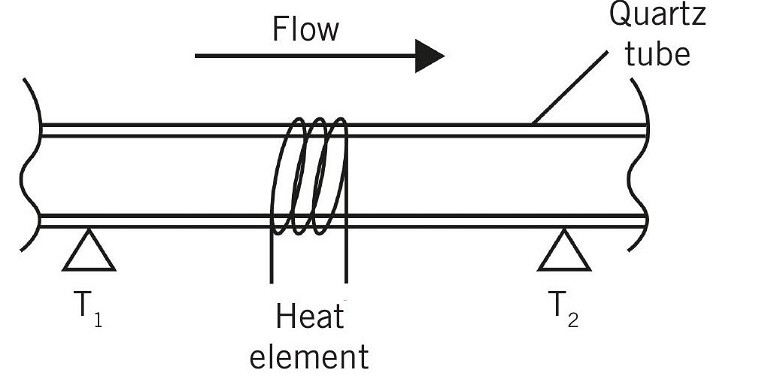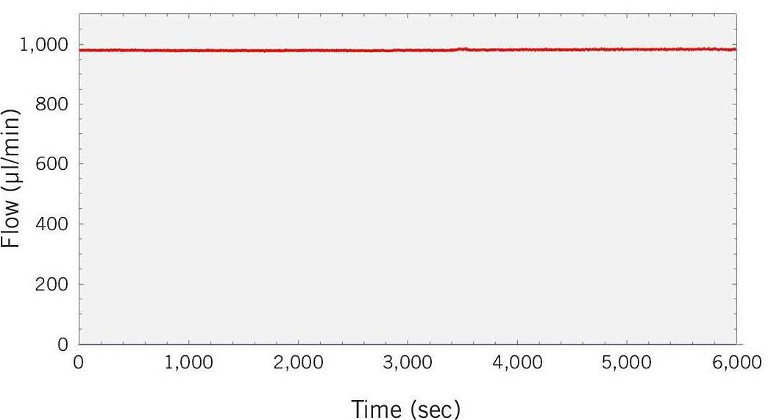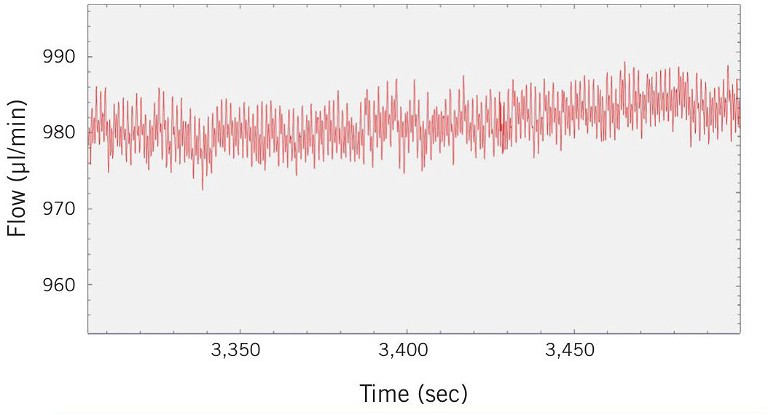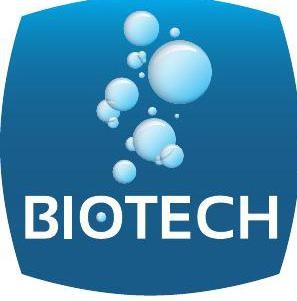SPOT LIGHT
Real-Time Monitoring of HPLC Pump Performance
Using equipment you trust can make analysing your products a simple process. However, reliability is also a matter of speed
High performance liquid chromatography (HPLC) is now one of the most widely used techniques in analytical chemistry. The range of applications using HPLC covers a vast range of sample types, concentrations, and compositions. This extreme flexibility is achieved by using specific columns carefully designed for each particular investigation. However, all HPLC separations have one detail in common: they are reliant on a stable and constant flow rate of solvent, and, by this, they all require constant performance of the HPLC pump. This technical note describes how a novel method of continuous monitoring of flow rate can provide real-time validation of the total HPLC system performance and, as such, improve reliability of results.
Traditional Methods
Until now, the direct determination of flow rate has been limited to system validation using volumetric flowmeters, or, when monitoring was required, by use of Coriolis force flowmeters.
While volumetric flowmeters are known to be accurate, the method they use is relatively slow, as measurement requires that a known volume must be filled, and time difference must be detected in order to obtain a single data value. As such, volumetric flowmeters integrate over a relatively large volume (often several hundred microlitres) and are not suitable for delivering real-time flow information.
Coriolis force flowmeters are well proven for providing very accurate flow measurements in HPLC systems, but unfortunately are quite expensive, and, therefore, a limited solution.
A New Technological Approach
Introduced in 2021, the new Biotech Liquid Flowmeter is based around a thermal flow sensor (Figure 1).
In the Liquid Flowmeter, the solvent flows through a quartz tube. Temperature sensors (T1and T 2) are positioned before and after a heating element, which elevates the solvent temperature slightly. The difference in temperature measured by the two sensors demonstrates the functions of the flow rate in the quartz tube. Using a proprietary algorithm this temperature difference is then converted into absolute flow rate units. Not only is this flow measurement technique extremely accurate and sensitive, but it also offers the advantage of being non-invasive, i.e., flow is not interrupted in any way.
Consequently, using this flow measurement method, the Biotech Liquid Flowmeter has the potential to be an ideal tool for monitoring of solvent flow rates in HPLC systems as it does not interfere with the measurement itself.

Figure 1: The Biotech Liquid Flowmeter with thermal flow sensors
Pump Monitoring Feasibility Study
Feasibility of continuous monitoring of a relatively simple HPLC system, consisting of isocratic pump, sample injector, and differential refractive index (DRI) detector, was carried out using a Biotech Liquid Flowmeter. No column was used to enable the experiment to focus strictly on HPLC pump performance and avoid any flow variation due to the column (such as column bleeding). Pure, deionised water was used as the solvent for the experiment, flow rate was set to a nominal 1.000mL/min. The Liquid Flowmeter was connected to the outlet of the DRI detector and the outlet of the flowmeter was then led to a waste bottle. Data acquisition of flow rate values was realised using the Flowmeter USB port, which also provides power supply to the device, and a PC. Data rate was approximately 15Hz or 15 values per second. The pump flow was then started along with data acquisition. The experiment was run for several days, day and night, with daily replenishment with fresh deionised water.

Figure 2: Flow stability plot Results
The complete flow stability data collected over several days is far too large to be displayed in this technical note, we, therefore, picked a representative 6,000 seconds segment (see Figure 2) to illustrate typical data output using the Liquid Flowmeter to monitor an HPLC pump. The Figure 2 plot shows the flow rate to be close to the nominal 1.000mL/min and appearing to be very stable over time. However, if these data are studied in high-resolution (see Figure 3) we can clearly see variation of flow from the HPLC system.

Figure 3: Detail of flow stability plot
Conclusions
This experiment clearly demonstrates the ability of the Biotech Liquid Flowmeter in combination with the Flow App to collect, in real time, flow data from an HPLC pump and therefore determine total HPLC system performance.
The high-resolution, real-time flow data that can be obtained using a Liquid Flowmeter opens the gate to deeper analysis of HPLC pump performance parameters, such as pulsation, thereby allowing a stricter definition of required parameters for reliable HPLC separation results. Furthermore, this technology offers a completely new tool for troubleshooting HPLC systems. This will be the object of future investigations.
Furthermore, there is potential for using this new flow meter in many other applications where it is necessary to have a close control of the flow rate. Other scientific analytical instrumentation such as surface plasmon resonance, different types of imaging systems, and DNA analysers are examples of high performance systems where it is important to control the flow rate effectively.
Dispensing systems is another area where anomalies of flow rate could cause severe deviations when used, for example, in a production application. Flow chemistry applications where addition of small volumes of reagents could have big impact on the final result is also dependent on accurate flow rates.

Biotech supplys fluidic system solutions, liquid transfer components, and innovative laboratory products to instrument developers, manufacturers, and distributors all around the world. The company specialises in on-line removal of gases and bubbles from liquids, servicing diverse areas, such as chemical analysis, biotech, and life science industries. Its mission is to empower you to design and assemble unique products by being a reliable partner for fluidic components, offering first-class service, in-depth knowledge, and advanced technical support for all the items we provide.
Biotech AB Råövägen 300, 439 92 Onsala, Sweden
+46 300 569180